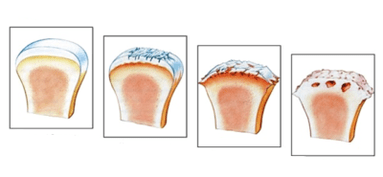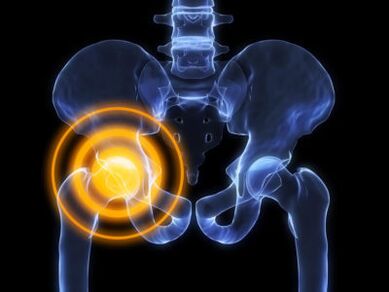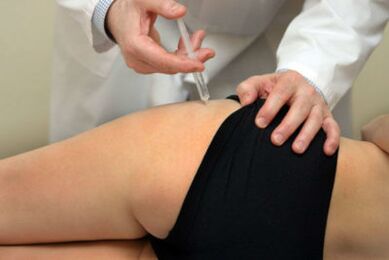The hip joint arthrosis is a complex disease with specific symptoms and complex treatment.The disease occurs against the background of metabolic disorders in the crispy tissue of the common cavity and chef of the femur.
Arthrosis of hip joints or coxartrosis is more common in aged old men.It is generally accepted that inflammatory reaction plays a major role in the pathogenesis of the disease.After a large number of studies, the arthrosis has been proven to appear atherosclerosis and diseases with metabolic disorders.
The essence of the disease
Coxartrosis is a disease based on metabolic disorders with atrophic and degenerative changes in the tissue cartilage hip joint.
You can't confuse arthritis with arthritis.While arthritis, non-infectious (aseptic) inflammation, which develops and advances for many years.
Development pathogenesis:
- Breach of metabolic processes in cartilage.The cartilage tissue receives nutrients using diffusion.The smallest inflammation or edem leads to lack of elements and minerals.
- Against the background of nutritious processes, the beginning of atrophic changes, cartilage tissue is refined, the amount of shared fluid and hondroblasts decreases.
- Due to the insanity and destruction of cartilage, strong pain begins, there is a decline in the amplitude of the joint movements.
- The cartilage fabric is a very sophisticated, phenomenal slit is narrowing, the common dystrophy is happening.
As long as the dystrophy is rejected for more than a year.The disease can only be stopped in the first phases, with the development of the third phase of osteoarthrosis, treatment is aimed at reducing symptoms and guidance of patient's life, alternative to drugs - endoprosthik.
Reasons

The disease is polyethologically, there are many states and factors that can lead to arthrosis or provoke its advancement.If the causes of the hip joint arthrosis are not revealed, such a disease is called idiopathic arthrosis.
The disease is not hereditary, but the genetic pathologies in which the cartilage of dysplasia occurs can cause the hip joint arthrosis.
Also, the cause of coxartrosis can be such diseases:
- PERTES Syndrome - a characteristic sign of disease is a violation of the delivery of nutrients on the cartilage tissue of the wrist and femur.He occurs in childhood, mostly the boys are sick.
- Congenital dislocations and subbreds of the femur.In the process of injury, inflammatory reaction and aseptic melting of cartilage tissue and feminine head can appear.
- Necrosis of femural head.It occurs due to damage to the upper artery, which is attached to the top of the head.
- Rheumatoid and juvenile arthritis.Against the background of the action of toxins or their own antibodies, the explivative inflammation is developed in common.
Given the fact that the disease is slowly advancing, the disease can be with one and two.
There are many factors that contribute to the appearance of arthrosis, they include:
- Spine diseases (kyphosis, lordosis, scoliosis);
- Metabolic connective tissue diseases;
- violation of blood supply in the joint;
- atherosclerosis of large vessels;
- state stress;
- Hip dysplasia;
- innate deformations of lower extremities;
- Infectious diseases;
- Inactive lifestyle;
- alcohol entry, smoking;
- Staros old age.
Don't forget that stretching people have a great risk of developing arthrosis in adulthood.
Also, one of the reasons can be traumatic damage to components in common.After reaching the tissue damage, an inflammatory reaction appears, as a result can be replaced with cartilage replacement.
Symptoms

Due to the fact that the disease is slowly advancing, the patient does not always pay attention to his first signs.It should be noted that the early diagnosis of the chance for the disease remission increases.It is very important to start treatment earlier, as this can be avoided in this way the appearance of ankylosis and complete osteoarthrosis.
With the Arthrosis of the connections, symptoms may occur with different intensities depending on the load and degree of disease.
Clinical picture of osteoarthritis hip joint:
- Painful sensations that grow on a strong pain on the front and side part of the thigh.Patients complain that the thigh hurts during the turn or cargo on the wrist.
- An unpleasant sensation caused in groin when they walk, sometimes combined with pain in the thigh.
- Strength and limitation mobility of the limbs in the hip joint.First, the departure function is suffering, and then everyone else is.
- Unpleasant sounds when walking, the compound can be clicked or crouched.Permanent pathological sounds can be the only sign of the disease.
- Morning rigidity, which passes in a few hours or before dinner.
Sometimes ignoring possible consequences, people begin to lead drugs for symptomatic therapy and thus mask the progress of the destruction process in the cartilage.
Disease degree
The clinical picture depends on the degree arthrosis of the hip joint and the reactivity of the patient's body.If the symptoms appear, as a rule, the changes occur in the X -Rays.In medical practice, it is common to distinguish between three radiological phases, each of which has its own characteristics.
Degree of arthrosis regarding changes X -Rays:
Arthrosis 1. Degree
They access minimal clinical events, and thus patients rarely seek doctor's assistance.An early diagnosis of disease The patient increases the chances of a full recovery.The initial period of the disease is characterized by small pain in the pelvis and thigh, it hurts increases on the background of physical effort or extended walking.In second place in terms of the frequency of manifestation, comes with a symptom of hurts in the groin.In 1 degree pain is pulled and rarely occurs.The volume of the movement is fully preserved.In the X -Ray, visuals are minor changes.
2. degree
In the case of the second degree, the patient begins to bother acute and frequent pain that can occur at rest.The symptoms, as a rule, manifest in the evening, and the morning rigidity does not go to dinner.During the long transition, the symptoms of conservation occurs, a person cannot fully load the disease of the couplings.Uneasiness occurs during flexion or squat, the processes of degenerative processes in the cartilage.Against the background of such changes, the leg can shorten, the atrophy of the cowards and pelvis occurring.Radiographies are visible to narrow a common gap, the reactions of perhual reactions are growing.There is a large number of osteophytes in Lumen joints.
Final or diffuse third phase of arthrosis
The third phase is characterized by the occurrence of motor dysfunction of the lower extremities.The patient complains of constant pain, which occurs for no reason.There is shortening of the limbs more than 5%, ankylose appears, the wrist loses the ability to mobility.The radiograph shows the complete closure of the common gap and a large number of osteophytes against the background of bone deformation.Treatment 3. The degree is performed only by operational.
Methods of treatment

The selection of treatment methodology depends on the stage of osteoarthritis.A comprehensive conservative treatment is used in the first phases.The most difficult is the second phase, because the conservative therapy is inefficient, and the indications for surgery are not sufficient.It is completely possible to heal arthrosis only with the development of the first degree of disease.
After diagnosis of the arthrosis of the hip combination, the doctor selects the treatment method.It is most commonly used:
- Conservative treatment with drugs;
- Surgical treatment;
- Practice therapy and massage.
Each treatment method has its characteristics, variations and specific goals.Conservative therapy is used for such purposes:
- Fight against etiological factors.For example, metabolic or hormonal disorders can be corrected.
- Symptomatic treatment focused on mitigation of the patient's life and mitigation of symptoms of alliteration.For this purpose, not-thesteroidal anti -infalmic drugs are used.The most commonly sodium diclofenak, Nimesulide, Ibuprofen are used from the NSAID.
To resolve constant pain, NSAIDs are taken almost every day, and this can affect the patient's gastrointestinal tract and cause a peptic ultra.
Surgical intervention is marked with a third degree of arthrosis and is the only method for restoring the walking function.The essence of the methodology is a complete or partial replacement of joint joints from the Titanium Endoprosthoses.
Media physical education is an integral part of any rehabilitation measure.Exercise therapy and massage aim to improve blood flow in the wrist.Also, exercise therapy is used to reduce the risk of ankylosis.
It should be careful when performing exercises, as you can damage the common osteophyte.Tactics and exercises should be selected by a doctor based on your individual characteristics and a clinical picture of the disease.



















